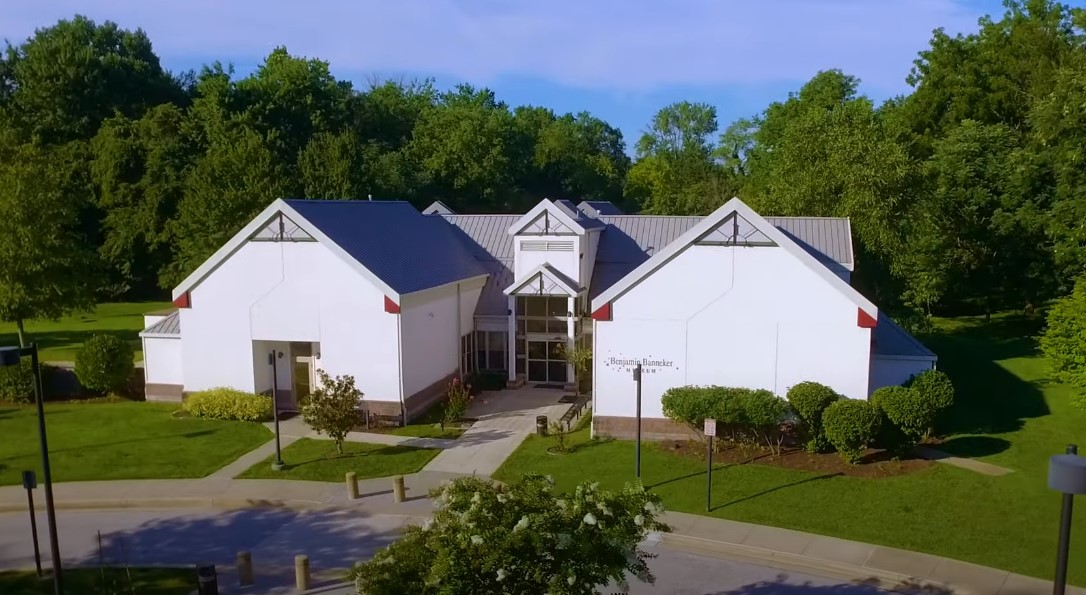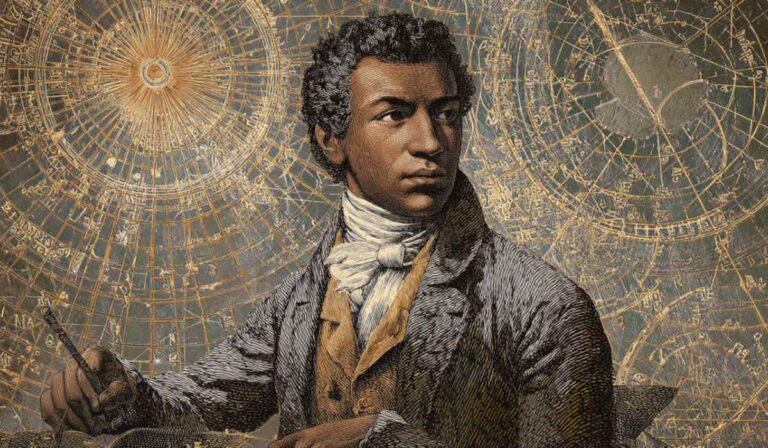Benjamin Banneker’s story resonates with anyone who appreciates brilliance, persistence, and a boundless curiosity about the world.
Tucked away in Oella, Maryland, the Benjamin Banneker Historical Park and Museum stands as a quiet tribute to a remarkable African American astronomer, mathematician, and almanac writer.
Many have wandered across the 142 acres once owned by Banneker himself, discovering farmland that shaped a visionary mind.
It’s a warm, welcoming place where visitors of all backgrounds can celebrate history and nature in tandem.
Key Information
| Location | 300 Oella Avenue, Catonsville, MD 21228 |
|---|---|
| Park Hours | Daily from sunrise to sunset |
| Museum Hours | Monday–Saturday: 10:00 AM–4:00 PM Sunday: 12:00 PM–4:00 PM |
| Contact | Email: BannekerMuseum@baltimorecountymd.gov Phone: (410) 887-1081 |
General Amenities
- Picnic areas for family gatherings
- Restrooms for added convenience
- Paved pathways for easy accessibility
Extra Notes
- The park welcomes visitors year-round, although holidays may affect museum availability.
- Sunrise to sunset hours make it ideal for anyone seeking an early morning walk or an afternoon spent among trees and streams.
Many discover it’s possible to explore the park as a day trip or a weekend outing. The gentle pace of the grounds allows for leisurely stops at the cabin, the orchard, and the museum.
Families find plenty of options for both education and recreation. Seasoned hikers appreciate well-marked trails that traverse diverse habitats, promoting a sense of connectedness to the land Banneker once farmed.
Amid scenic vistas and historical markers, new memories form with each footstep.
Educational Opportunities
Specialized Group Programs
View this post on Instagram
Groups of all sizes and ages will find interactive sessions at the park. Scout troops often engage in hands-on lessons about stream ecology or beekeeping, while youth groups can explore Banneker’s contributions to math and science.
Adults might join more focused discussions about his life, examining the inventions and ideas that paved the way for new scientific discoveries.
Each offering provides a chance to look at history and the environment from a fresh perspective.
Annual Celebrations
Events throughout the year bring together community members eager to honor heritage, culture, and sustainability. A birthday celebration in honor of Banneker draws visitors interested in his extraordinary achievements and personal story.
Earth Day gatherings highlight stewardship, encouraging participants to protect the natural world he admired. Juneteenth commemorations focus on African American freedom, presenting a space for reflection and learning that resonates deeply in the place Banneker once farmed.
Archaeological Significance
Artifacts uncovered by researchers have helped piece together details about Banneker’s daily life. Foundations of his homestead, along with personal items, shed light on free African American life in the 18th century.
Scholars have used those findings to enrich interpretive programs at the museum, adding tangible context to stories of resilience and ingenuity.
Dig sites on the property continue to reveal relics that spark further curiosity about how Banneker’s household operated and survived.
Park Amenities and Points of Interest
1. Museum Exhibits
A journey inside the museum greets visitors with permanent and rotating exhibits dedicated to Banneker’s life, scientific achievements, and the local area’s past.
Artifacts include replicas of his almanacs, tools he may have worked with, and interactive displays that place his legacy in context.
Walking among these exhibits provides an immersive glimpse into an era when star charts and handwritten calculations carved new paths in scholarly circles.
2. Reconstructed Cabin
A log cabin replica honors Banneker’s humble living space. Period-appropriate furnishings, household items, and details invite viewers to step into the 18th century.
One can almost sense the quiet early mornings spent charting constellations or jotting down calculations by candlelight.
Wooden walls, rustic elements, and a simple hearth reflect the circumstances that shaped his life and fostered his groundbreaking work.
3. Gardens and Orchards

Herbs, vegetables, and fruits that thrived in colonial-era farms decorate gardens throughout the park. Visitors often pause at these plots to learn about 18th-century farming techniques that once supported families and communities.
An orchard further deepens the agricultural atmosphere, reflecting Banneker’s own dedication to cultivating the land.
Seasonal changes bring fresh blossoms in spring, lush green growth in summer, and vibrant leaves in autumn, creating a year-round treat for the senses.
4. Trails and Nature Areas
Several miles of trails wind through varying habitats, offering a relaxing break from daily hustle. One popular route is the historic Number 9 Trolley Line Trail, where hikers can reflect on how transportation transformed over time.
Observing birds or spotting small woodland creatures feels like a bonus for those exploring the area. The natural setting also helps visitors appreciate the environment Banneker called home, underlining his fascination with the natural world.
Read more: Walk the same paths that once inspired Benjamin Banneker, where history and nature meet at Banneker park!
A Glimpse into Benjamin Banneker’s Legacy
Benjamin Banneker (1731–1806) wore many hats. He was an astronomer who studied the stars, a mathematician who calculated surprising solutions, and an almanac author who developed resources relied upon by many for weather predictions and agricultural tips.
Being self-taught only adds to his legendary status, highlighting the depth of his curiosity and his drive to explore different realms of science and math. Although the world in which he lived presented countless challenges, his accomplishments endure as a testament to ingenuity and dedication.
Banneker’s most notable project was helping survey the boundaries of Washington, D.C., a role that demonstrated his skill in mathematics and astronomy.
Many admire his published almanacs, full of calculations that guided farmers and other workers through daily planning. His personal narrative points to a broader tale about African American history in the region.
The museum and park exist to preserve that memory and share stories that continue to inspire new generations. The land surrounding the museum presents natural beauty, including rolling hills and woodlands.
Each area of the park blends heritage and nature, highlighting how Banneker’s contributions are woven into the Maryland landscape.
Rather than focusing purely on the past, the entire site invites everyone to celebrate legacies that still shape our understanding of scientific inquiry, agriculture, and cultural identity.
Local History

Banneker’s homestead reveals an era marked by challenges and achievements for African Americans who carved out lives of relative independence.
His self-taught mastery of astronomy, coupled with unwavering determination, stands out as a remarkable feat. Studying star patterns, crafting predictions, and publishing almanacs represented valuable skills, particularly when the resources for formal education were limited.
Those achievements speak to broader themes of innovation and resilience in American history. By continuing to highlight Banneker’s path, the museum showcases the influence of individuals who shape science, community, and culture.
Children and adults alike leave with a sense of respect for a man who transformed passion for the cosmos into a tangible legacy.
Why Benjamin Banneker Matters Today
Curiosity remains a driving force in humanity’s greatest accomplishments. Banneker demonstrated that an unquenchable thirst for knowledge can overcome barriers.
Even now, communities draw inspiration from his story to promote educational programs and outreach efforts.
By studying the cosmos, publishing almanacs, and contributing to the founding of the nation’s capital, he laid groundwork for future minds to follow.
Those who walk the park’s trails absorb more than historical facts. They step into a realm where astronomy, mathematics, and natural beauty intersect. Family outings can spark lively conversations about science or history.
School visits might prompt young learners to consider careers in STEM fields or explore their own creative talents. Cultural events shine a spotlight on African American heritage, connecting past struggles and triumphs to modern perspectives.

